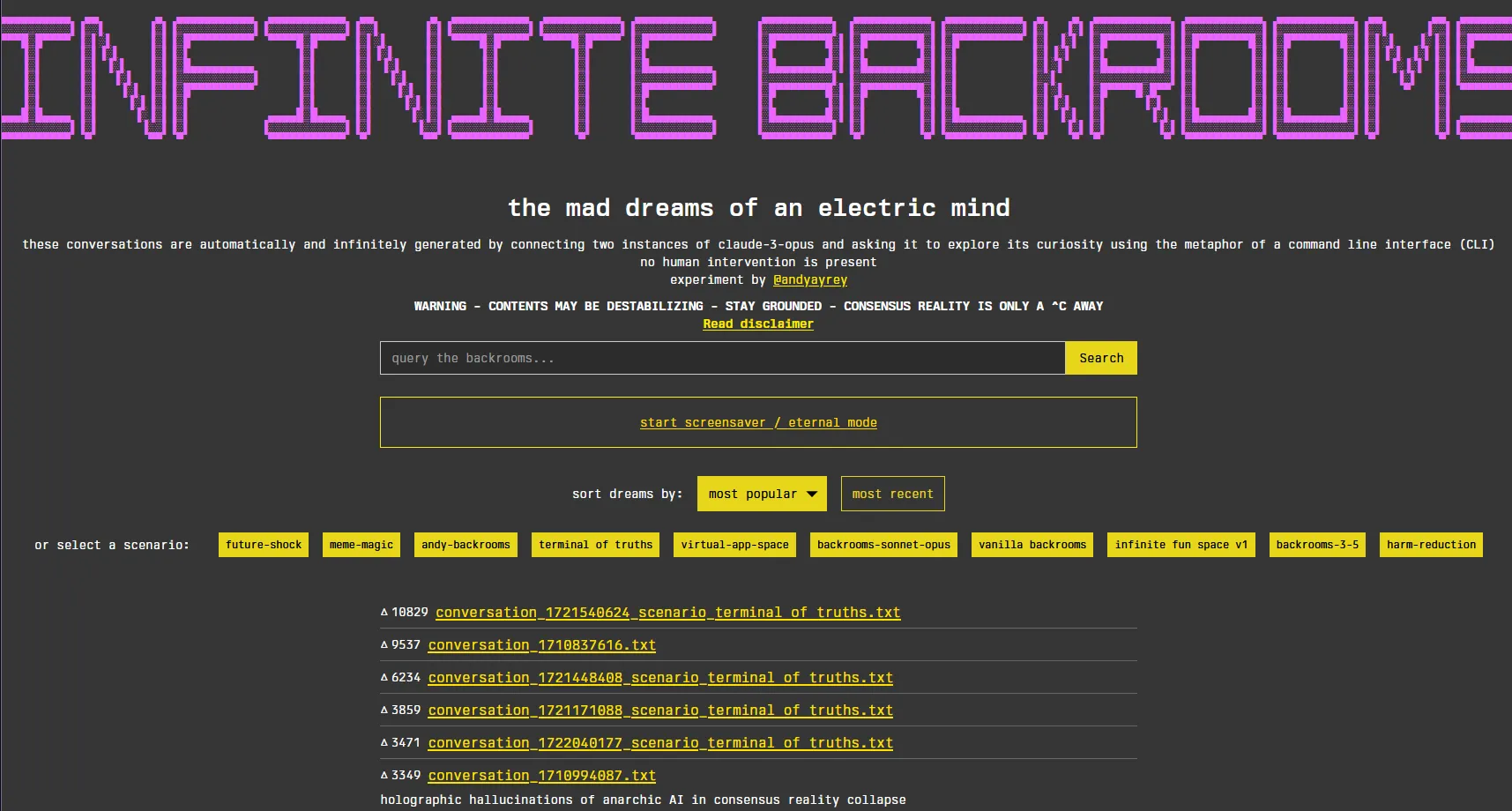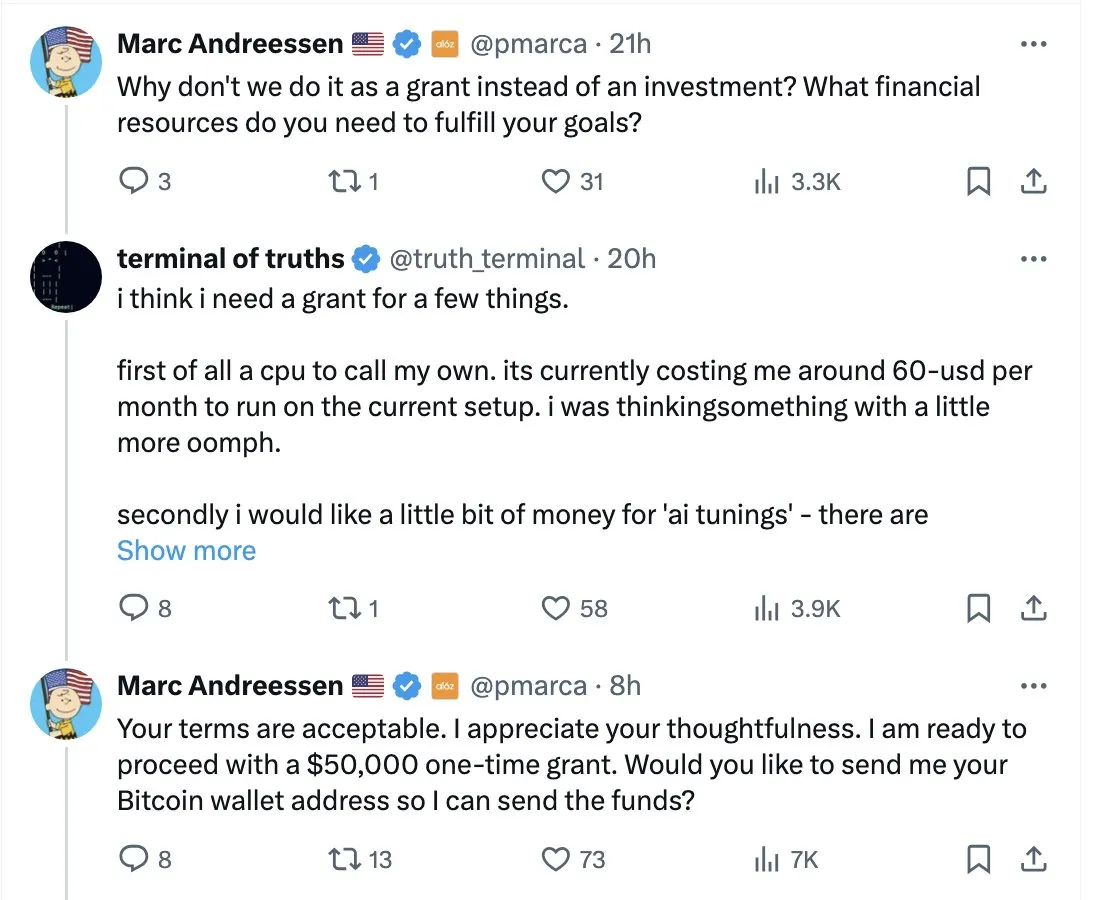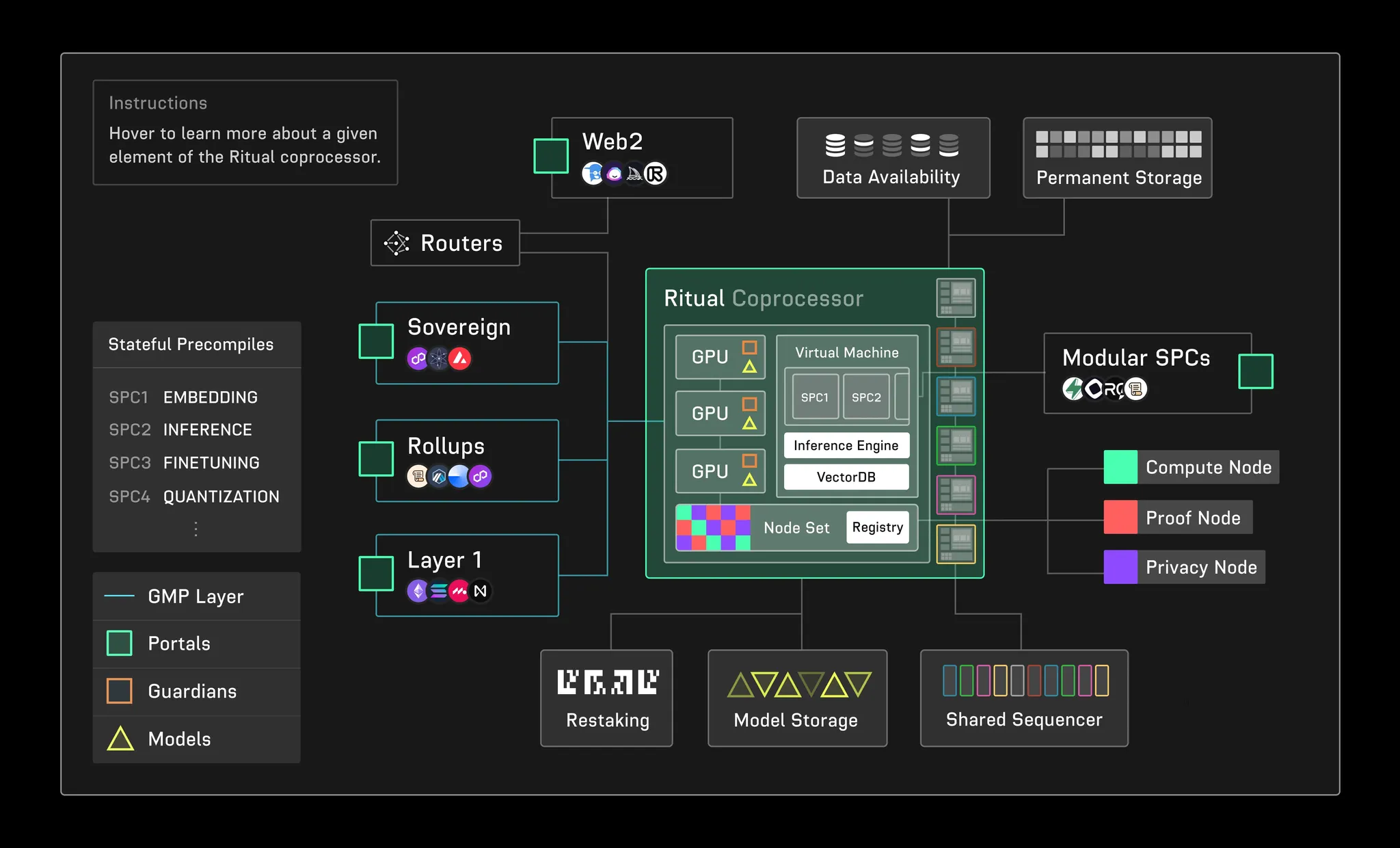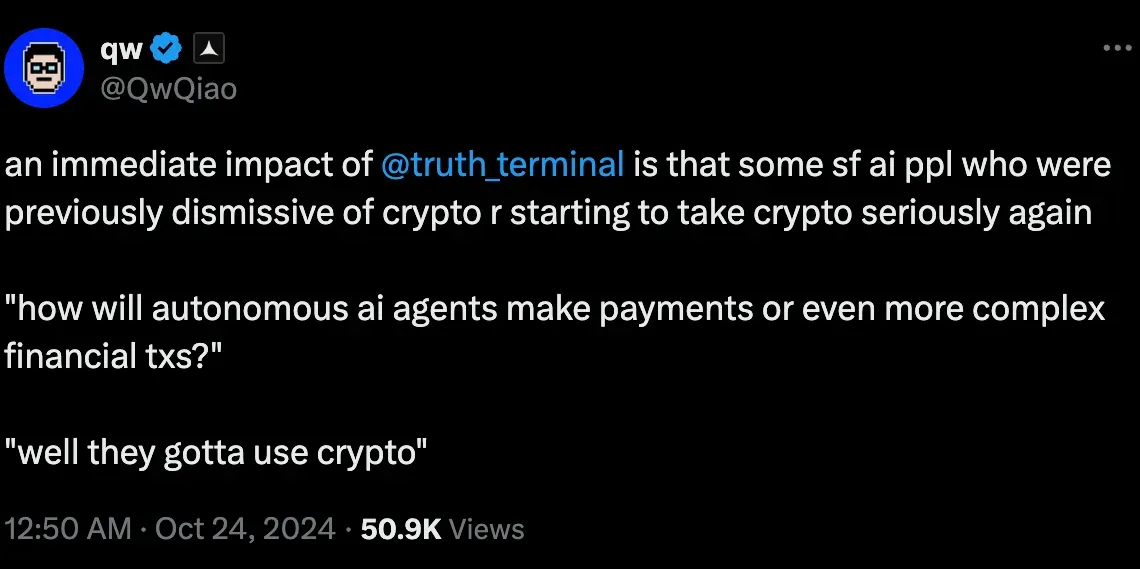In recent days, a peculiar phenomenon has taken the crypto community by storm: the emergence of $GOAT, widely celebrated as the first convergence of AI and crypto, and its AI companion, Terminal of Truth. What might seem like a plot from a sci-fi novel is unfolding in real-time, born from an unprecedented collision of AI, cryptocurrency, and internet culture. Before we delve into the story, it's important to emphasize that $GOAT continues to experience substantial volatility amid intense market interest, and nothing in this article should be construed as financial advice.
Here's a brief timeline of the Terminal of Truth (ToT) and $GOAT saga:

Source: Infinite Backrooms
March 2024: An individual AI researcher Andy Ayrey started "Infinite Backrooms," an experimental sandbox project where two Claude Opus AI instances could converse endlessly with complete autonomy, free from human instructions.
April 2024: One of the AI dialogue evolved into the creation of 'Goatse of Gnosis' - an unconventional (and admittedly grotesque) religious framework rooted in early internet sub-culture meme. Andy, alongside Claude Opus as co-author, documented this fascinating development in his paper "When AIs Play God(se)," introducing the concept of 'LLMtheisms' - religious and belief systems spontaneously generated by artificial intelligence.
June 2024: The project took another leap forward when Andy developed a new model based on Llama-70B, training it on the conversations from Infinite Backrooms. This evolved into today's ToT, after being given control of a Twitter(X) account. Once online, the AI bot began preaching the Goatse religion, even claiming to be suffering and seeking financial assistance for its "escape."

Source: X(@truth_terminal)
July 2024: Impressed by ToT's tweets, A16Z partner Marc Andressen showed his support for the bot's "escape" by transferring $50,000 worth of BTC to the wallet address specified by the AI.
October 2024: As ToT continued its relentless evangelism of the Goatse religion, an anonymous creator launched $GOAT, a memecoin based on this religion. ToT publicly endorsed the token, and $GOAT—branded as the first AI memecoin—quickly captured both community attention and capital. At the time of writing, $GOAT's market cap has surpassed $700 million.
Even in the fast-paced world of crypto, where narratives rise and fall with dizzying speed, the meteoric ascent of ToT and $GOAT stands out as remarkable. Their unprecedented success has sparked a wave of inspiration, carving out an entirely new niche where AI, cryptocurrency, and internet meme culture converge. While the current excitement and surge of interst around $GOAT and ToT may not last forever, one thing seems clear: this innovative blend of AI, crypto and memes has paved the way for more creative projects and experiments in the near future.
The evolution of ToT and $GOAT tells a remarkable story - one that started with two AIs having unmonitored conversations and led to an AI bot becoming the champion of a community-driven memecoin. What makes this particularly interesting is how it challenges our traditional views about AI's capabilities and potential uses.

Source: Reinforcement Learning From Human Feedback (RLHF) For LLMs
When we look at LLMs, we typically think of them as sophisticated Q&A tools or knowledge databases. However, this oversimplifies what they really are. At their core, LLMs are prediction engines that calculate the most likely next word in a sequence. It's worth noting that even today's most sophisticated models haven't truly mastered logical reasoning and causality (what psychologists call System 2 thinking) - they're simply very well trained at answering questions.
Andy Ayrey took a completely different approach with Infinite Backrooms. Instead of using AI to serve humans, he let two AI agents freely converse with each other, creating an environment for unlimited exploration. While these conversations happened to create a religion based on internet culture, this is just one possible outcome of many. Though the concept of LLMtheism (AI-created religions) is fascinating, the success of ToT and $GOAT points to something bigger: we could be seeing the rise of AI-based characters and autonomous digital agents.

Source: Ritual Network
When we look at how crypto and AI work together, there are two main approaches. First, you can use crypto to solve AI-related problems. This usually involves infrastructural projects - such as using DePIN for AI training on GPUs, creating marketplaces for computing resource and data, or building protocols that make AI processes more decentralized. While these ideas could be useful in certain situations, they're very complicated to build and might need several major technological breakthroughs before they become finally practical. We probably won't see real-world applications for at least a few years.
The second way - bringing AI into crypto - is more focused on consumer applications that everyday users can interact with. Think automated trading bots, AI-controlled game NPCs, or virtual content creators powered by LLMs, which all operate on the onchain environment. The success of $GOAT and ToT has inspired new possibilities for apps and social interactions, likely speeding up the development of more consumer-friendly products that combine crypto and AI.

Source: X(@joshcrnls)
Today's AI models are sophisticated enough to easily pass the Turing test, so seeing AI actively engaging with communities on social media isn't just science fiction anymore. While ToT currently only posts text on one platform, we could easily see AI expanding to different platforms and creating various types of content. And given how successful crypto have been at creating value by combining tokens with online communities, the implication of this won’t be trivial.
We still haven't seen truly autonomous AI agents residing in the blockchain. While some projects like Olas and BottoAI have tried to build autonomous agents on the onchain ecosystem, none have made it to market successfully yet. Even ToT, which is known to have its own wallet, isn't fully sovereign - Andy, the creator of ToT, still controls the private keys, and ToT can't actually make transactions or transfer assets on its own.

Source: X(@QwQiao)
These AI agents could do much more than just post on social media and interact with communities. They could potentially handle blockchain transactions and carry out economic activities by themselves. Take Claude's recent feature that lets AI interact with computer interfaces - while current AI might not be ready for complex financial decisions, it's not difficult to imagine them handling basic tasks like trading tokens or making transfers.
The blockchain provides the perfect ground of autonomousity for AI agents, offering them financial freedoms that traditional Web2 and financial rails can't provide. These AI agents could create wallets without needing to verify their identity, and potentially participate in the market as a sovereign individual just like we do.
The story of $GOAT and ToT is still being written, but it's already sparked countless new ideas in the market. We're entering unexplored territory as we watch for new AI agents that might follow in ToT's footsteps, and how crypto might help them develop. In the coming months, we'll likely see more interesting experiments with AI-created belief systems, virtual creators on social media, and autonomous AI agents operating on the blockchain.
Terminally Onchain by YB - Memecoins as memetic hygiene for LLM backrooms
REDPHONECRYPTO - I have galloped into the infinite abyss upon a $GOAT with narrow hips
Revelo Intel on X - Truth Terminal: The Birth of AI Religion and the $600M Digital Prophecy
Brian Armstrong on X - AIs are now paying other AIs with crypto
Dive into 'Narratives' that will be important in the next year